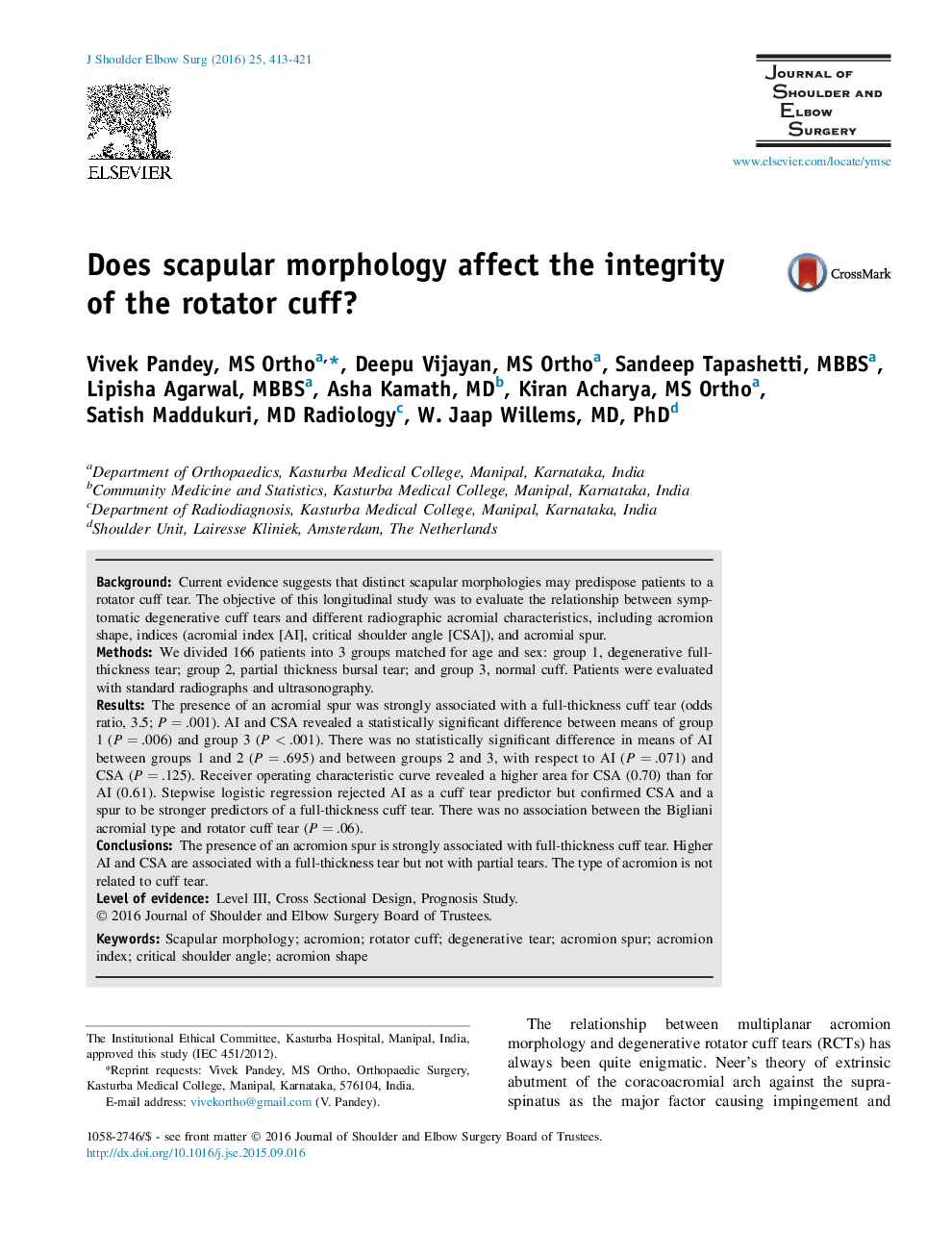| Article ID | Journal | Published Year | Pages | File Type |
|---|---|---|---|---|
| 4073094 | Journal of Shoulder and Elbow Surgery | 2016 | 9 Pages |
BackgroundCurrent evidence suggests that distinct scapular morphologies may predispose patients to a rotator cuff tear. The objective of this longitudinal study was to evaluate the relationship between symptomatic degenerative cuff tears and different radiographic acromial characteristics, including acromion shape, indices (acromial index [AI], critical shoulder angle [CSA]), and acromial spur.MethodsWe divided 166 patients into 3 groups matched for age and sex: group 1, degenerative full-thickness tear; group 2, partial thickness bursal tear; and group 3, normal cuff. Patients were evaluated with standard radiographs and ultrasonography.ResultsThe presence of an acromial spur was strongly associated with a full-thickness cuff tear (odds ratio, 3.5; P = .001). AI and CSA revealed a statistically significant difference between means of group 1 (P = .006) and group 3 (P < .001). There was no statistically significant difference in means of AI between groups 1 and 2 (P = .695) and between groups 2 and 3, with respect to AI (P = .071) and CSA (P = .125). Receiver operating characteristic curve revealed a higher area for CSA (0.70) than for AI (0.61). Stepwise logistic regression rejected AI as a cuff tear predictor but confirmed CSA and a spur to be stronger predictors of a full-thickness cuff tear. There was no association between the Bigliani acromial type and rotator cuff tear (P = .06).ConclusionsThe presence of an acromion spur is strongly associated with full-thickness cuff tear. Higher AI and CSA are associated with a full-thickness tear but not with partial tears. The type of acromion is not related to cuff tear.
